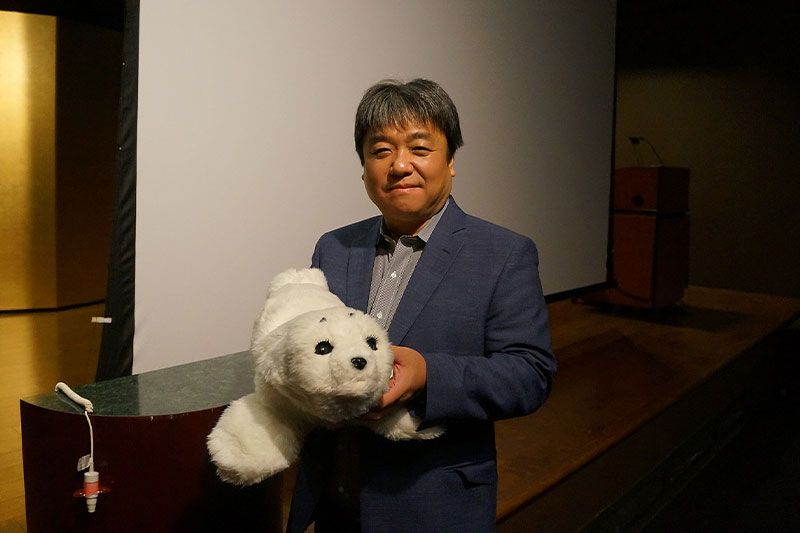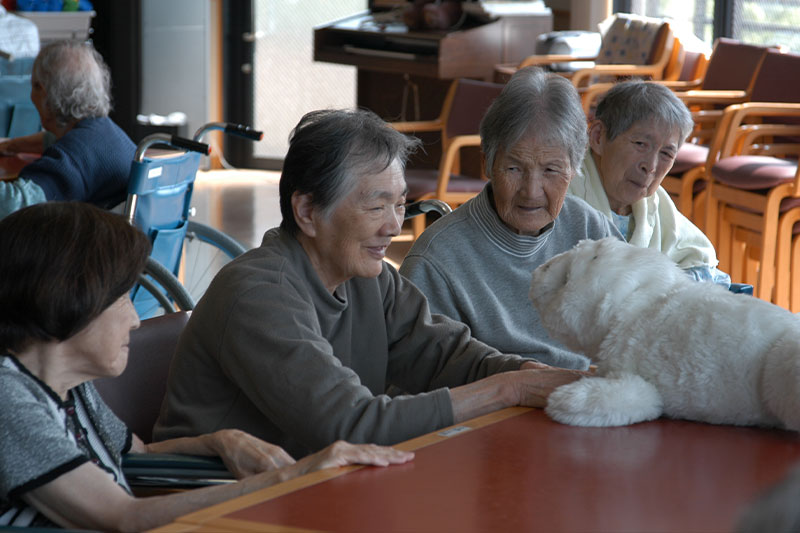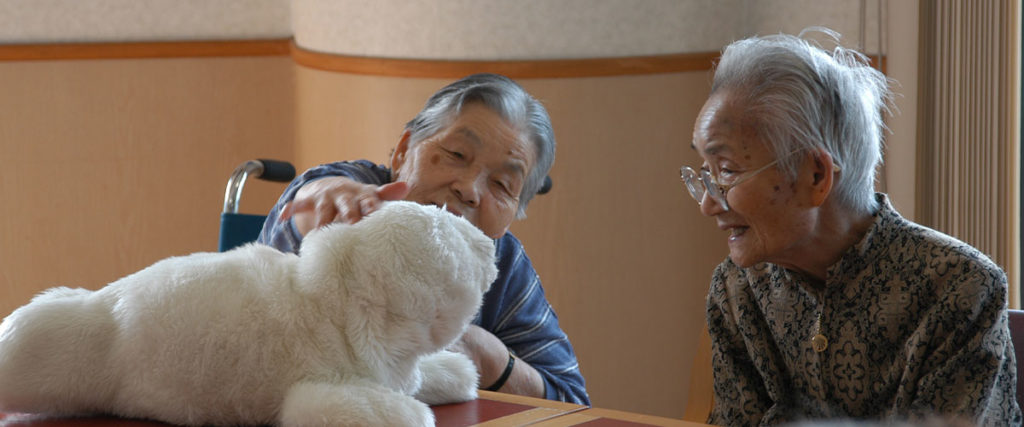How effective is robot therapy? Professor Takanori Shibata has created PARO, a therapeutic robot that uses emotional intelligence to bring comfort to dementia patients, decreasing anxiety, agitation and aggression.
By 2050, the UN predicts that nearly 2.1 billion people will be aged 60 and upwards – and nearly 152 million will be diagnosed with dementia, a degenerative disease that can have a devastating impact on individuals, families, and caregivers. When it comes to the emotional toll of this, social robots are thought by some to be the answer. One of them is Dr Takanori Shibata, Professor at the Tokyo Institute of Technology and creator of PARO, an award-winning AI therapy robot roughly the shape, size and weight of a baby harp seal. Replicating the well-documented psychological, physiological and social benefits of animal therapy without the hassle of looking after a living pet, Takanori has created a robotic equivalent that has been shown to help alleviate stress and reduce depression and anxiety in patients with dementia, Alzheimer’s and cancer. Featured by The New York Times, WSJ, and CNN, PARO has already been used internationally in over 30 countries – and has pioneered a new wave of social robots that could radically change healthcare as we know it. We sat down with Takanori to understand the science behind it all.

Photo Credit: commons.wikimedia.org
For someone suffering from dementia, navigating everyday tasks in a continually changing world can be a confusing, unfamiliar, and anxiety-inducing experience. Trapped in your own mind, it can become difficult to recognise loved ones, recall simple tasks, or communicate desires. “Some people may have negative behaviours such as agitation, aggression and wandering, but PARO helps to improve their mood and reduce their pain, anxiety and depression, and then they stop or reduce these negative behaviours,” Takanori explains of the fur-covered, infant-sized robot. He shares a video where PARO is introduced to a distressed elderly gentleman whose focus shifts to this small, squeaking bundle of warm fur – the patient strokes PARO’s back gently, reassured by the familiarity that PARO brings, and smiles.
You might also like The Japanese Pet Robot Lovot That Will Make You Happier

Helping elderly patients improve their quality of life, PARO uses biofeedback therapy to alleviate loneliness, stress, depression and pain without medication, often working quickly to improve a patient’s mood and encouraging them to communicate. At the moment, agitation in dementia patients is commonly treated with psychotic medications, Takanori says, but these take 30 to 45 minutes to take effect and can have side effects including drowsiness which heighten the risk of a fall, requiring a caregiver to stay with the patient. Instead, PARO is being suggested to replace the use of psychotic medications.
In addition to improving the emotional well-being of people with dementia, PARO has helped to reduce the severity of physical symptoms including Parkinson’s tremors and Alzheimer’s-induced memory loss, as well as pain caused by cancer treatments. “Combining medications can cause interactions, so with chemotherapy, patients cannot have medications for reducing pain, nausea or anxiety. But PARO doesn’t have any side effects so we can combine PARO and the medication,” says Takanori. In another instance, he describes how the robot helped a formerly bilingual patient with Alzheimer’s temporarily recover her ability to communicate in Danish. “In the case of people with dementia, some portion of the brain is damaged. She couldn’t access the Danish dictionary. But, when she was with PARO, the remaining portions were activated so her speech engine could access the Danish dictionary.”

Amidst a world where caregiving for the elderly could form a major part of society, the idea encouraging Takanori to push ahead is that AI social robots could be the answer to around-the-clock care, always available to comfort or assist individuals – even at 3 am in the morning. For now, however, cost remains a major barrier. An emerging technology, therapy robots are still priced towards institutions rather than individuals, although this is beginning to shift with more affordable options such as toy giant Hasbro’s line of robotic companion dogs and cats. In addition, establishing the medical benefits of these robots hits a bottleneck – clinical trials can take five to seven years. “Paro became a medical device in 2009, but insurance companies and Medicaid only started to accept reimbursement in 2018. So it took nine years to convince them to integrate PARO into the medical system in the West,” Takanori explains. Still, PARO is making slow, but steady progress into more widespread medical acceptance, which will place it at the heart of a future where rapid advancements in artificial intelligence could herald an era of virtual psychotherapists, social robots, and personalised service robots, all working in tandem to improve the physical and mental health of humanity.
Related Articles
Meet The Robot That Could Be Interviewing You At Your Next Job
Could AI Robots Perform Brain Surgery? This Taiwanese Company Thinks So.
AI-Driven Architecture Could Be the Future. Meet the Professor Making It Happen.





